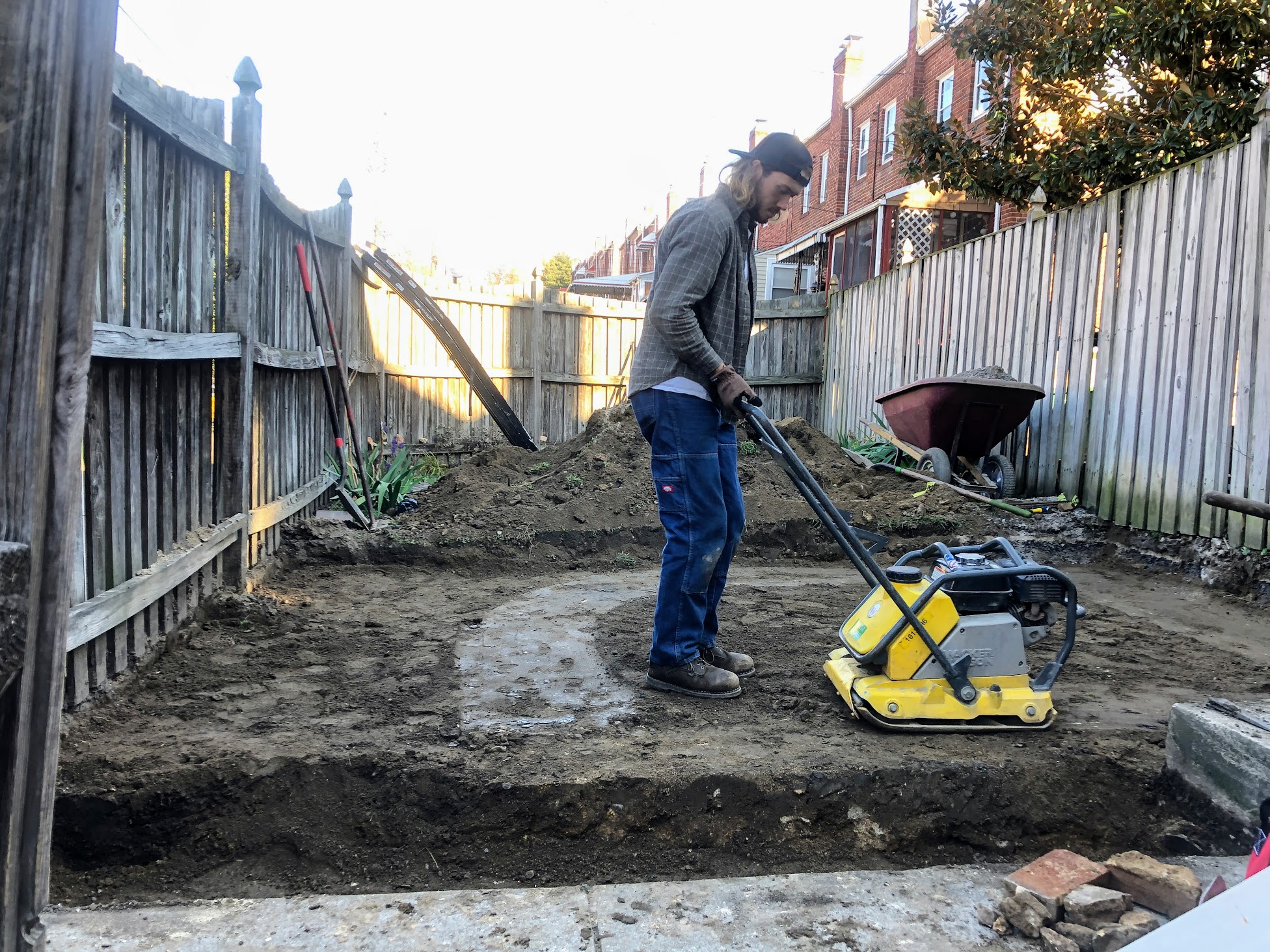Patio Build in Hampden – Dec. 2020
This paver patio build was a great project. Initially we had a few challenges. First, the back yard is small so we had to use our space efficiently. Second, there are two different concrete pads at different heights. We. had to devise a plan to incorporate a step so that the patio could rest level and remain functional.
Start

To begin, we drove stakes into the ground mapping out the dimensions of the patio. The stakes serve as a visual marker so that we know how much soil needs to be excavated.
Thankfully this yard had nice topsoil that was easy to dig. We made quick work of excavating the foot print of the patio. We extended our digging about 6″ beyond the dimensions of the patio so that we had room to work.

After the area for the patio has been excavated, we need to compact the subsoil with a plate compactor. We dug even deeper along the sidewalk where the retaining block and capstone will be installed for the step.
Just like any structure, the foundation cannot be overlooked. It is very important that the subsoil is properly leveled and compacted. After double and triple checking our work, we can move on to the next step.

We had to install our retaining wall blocks before we could load our base material into the patio area. In order to do that, we pack our base material into the deep trench we dug along the sidewalk. Then we compacted the base material and made sure that it was level. After that, we start laying the blocks side by side to build our step.
Now we can begin packing in the rest of the base material because the retaining wall blocks will hold it in. As usual, we checked for level before marking this task as complete.

After all of our hard and tedious work, we can begin the fun part of building a patio. We spread 1″ of sand over top of our base material. Then, we picked a corner and started to arrange our pavers. This process was fun and rewarding. Because we took our time during the prior steps, we can quickly see progress.
Before long, we had most of the patio pavers laid out. The only thing left to do was cutting the perimeter blocks and step cap stones to size. Using a circular saw with a cement blade made quick work of this task.
Once all of the pavers and capstone were laid out, we used a plastic edging material and spikes around the patio perimeter to hold the pavers in place. Although, the customer wanted the patio to extend the entire width of the lawn, we had to make a new plan. If the patio extended all the way across the back yard, we would not be able to install the edging material and the strength of the patio would be compromised. Instead, we made a decorative border with pea gravel.
Finally, we cleaned the site, backfilled soil to the edge of the patio, and planted grass seed to cover the disturbed earth.
